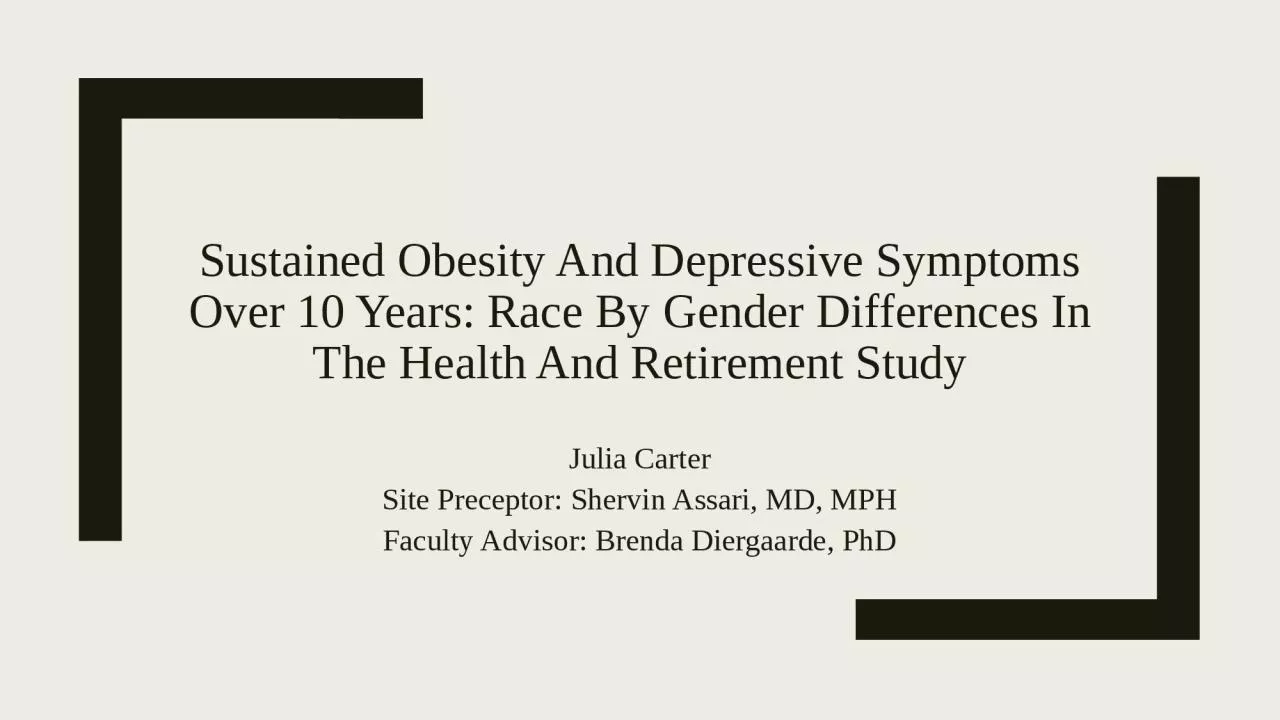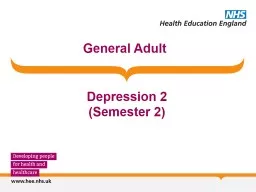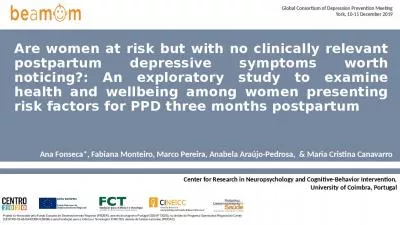PPT-Sustained Obesity And Depressive Symptoms Over 10 Years: Race By Gender Differences In
Author : paisley | Published Date : 2023-05-27
Julia Carter Site Preceptor Shervin Assari MD MPH Faculty Advisor Brenda Diergaarde PhD My Internship Experience MICHR Michigan Institute for Clinical and
Presentation Embed Code
Download Presentation
Download Presentation The PPT/PDF document "Sustained Obesity And Depressive Symptom..." is the property of its rightful owner. Permission is granted to download and print the materials on this website for personal, non-commercial use only, and to display it on your personal computer provided you do not modify the materials and that you retain all copyright notices contained in the materials. By downloading content from our website, you accept the terms of this agreement.
Sustained Obesity And Depressive Symptoms Over 10 Years: Race By Gender Differences In: Transcript
Download Rules Of Document
"Sustained Obesity And Depressive Symptoms Over 10 Years: Race By Gender Differences In"The content belongs to its owner. You may download and print it for personal use, without modification, and keep all copyright notices. By downloading, you agree to these terms.
Related Documents














